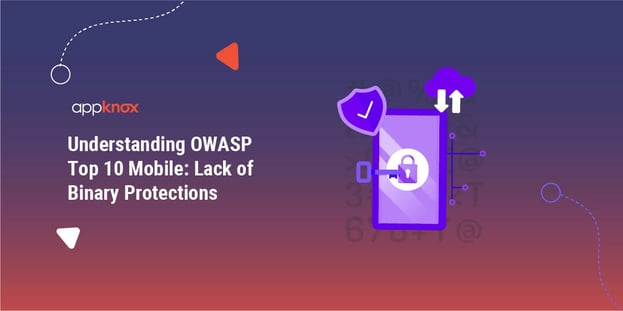
BLOG

BLOG
Continuing on our journey to understand the OWASP Top 10 Mobile security threats, today we will try to know more about the last threat under the OWASP umbrella - Lack of Binary Protections.
A lack of binary protections within a mobile app exposes the application and it’s owner to a large variety of technical and business risks if the underlying application is insecure or exposes sensitive intellectual property. A lack of binary protections results in a mobile app that can be analyzed, reverse-engineered, and modified by an adversary in rapid fashion.
Typically, a hacker will use an automated tool to reverse engineer the code and modify it using malware to perform some hidden functionality.
It is difficult to detect that an adversary has reverse engineered an app’s code. Usually, the app owner would know about this when the same code shows up in iTunes, Google Play or any other third party app store. This detection is also by accident and not because of any policing efforts.
If you are hosting code in an untrustworthy environment, you are susceptible to this risk. Untrustworthy environments include mobile clients, firmware in appliances, cloud spaces, or datacenters within particular countries. A few questions to ponder over would be:
Good Read- Understanding OWASP Top 10 Mobile Threats
A multifaceted and proactive approach is crucial to prevent the risks associated with the lack of binary protection.
Code obfuscation makes reverse engineering difficult for attackers, helping you secure your app against threats.
By implementing robust techniques like stack protection and ASLR (Address Space Layout Randomization), you empower your app with a formidable defense against runtime attacks.
Keeping secure communication and authentication processes in place helps protect APIs from exploitation.
Ensure additional security by utilizing a combination of encryption for data stored in the mobile application and secure key management techniques.
By diligently monitoring the application for anomalies and swiftly implementing incident response procedures, you reassure app owners about the proactive security measures in place.
Most of the mobile app developers or app owners do not prevent an adversary from successfully analyzing, reverse engineering or modifying the app’s binary code. Organizations should apply binary protections to a mobile app under a few different circumstances:
Binary protections slow down an adversary from analyzing exposed interfaces and reverse engineering code within the mobile app. All too often, the adversary will steal code and recycle it within another app for reselling.
Code modification often takes the form of repackaging or insertion of malware into existing mobile apps.
Typically, a lack of binary protection will result in the following business impacts:
.jpg?width=50&height=50&name=10606600_10204086667262761_7381430219125488912_n%20(1).jpg)